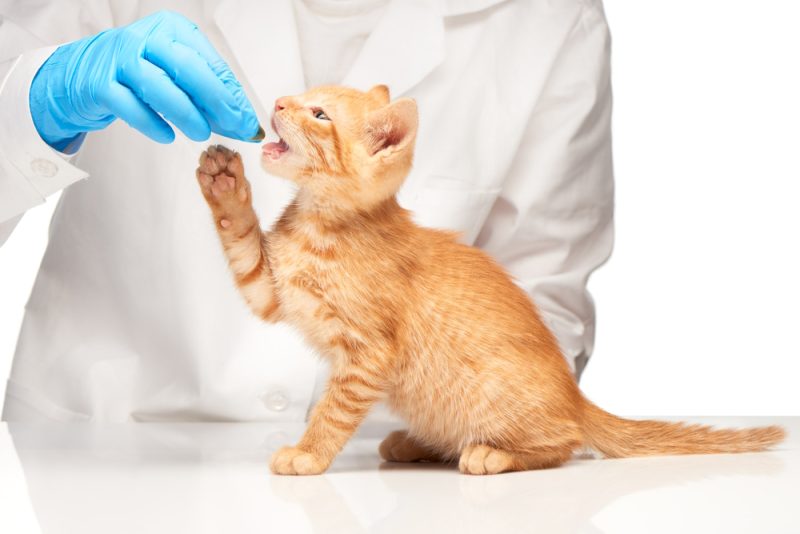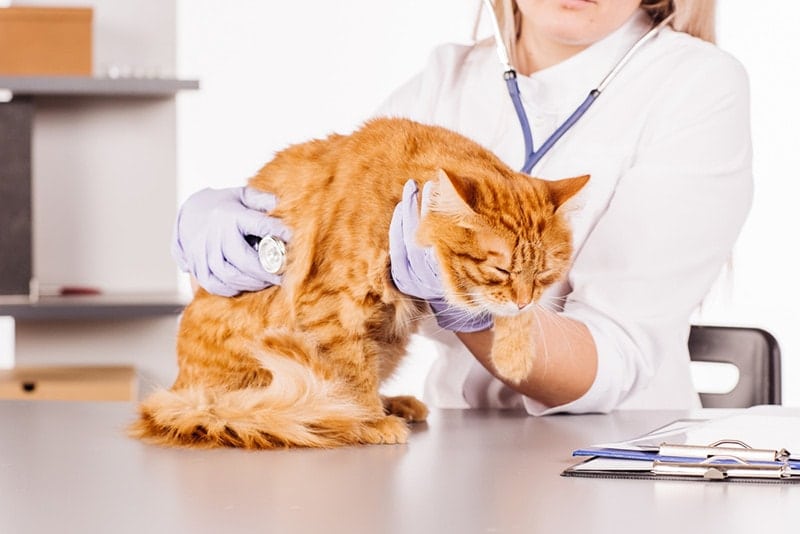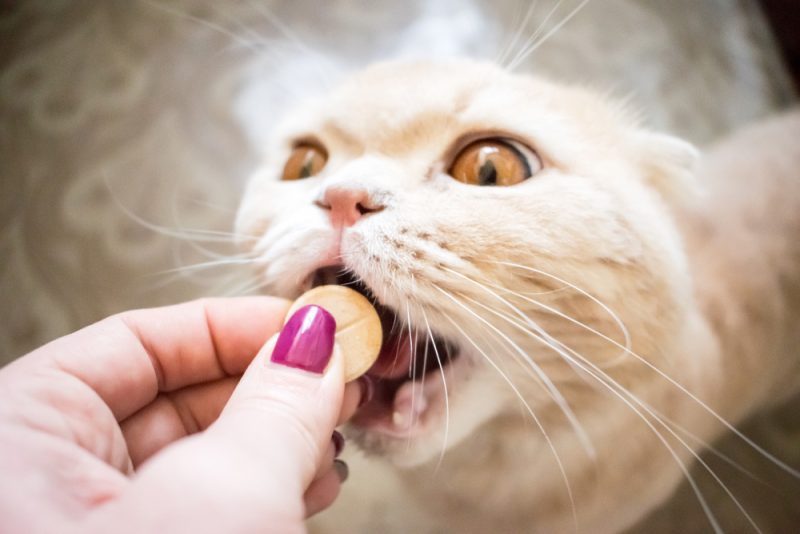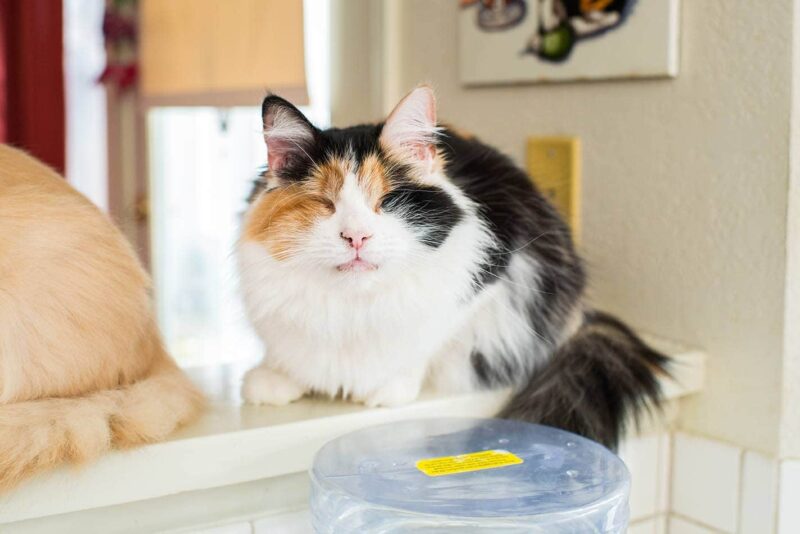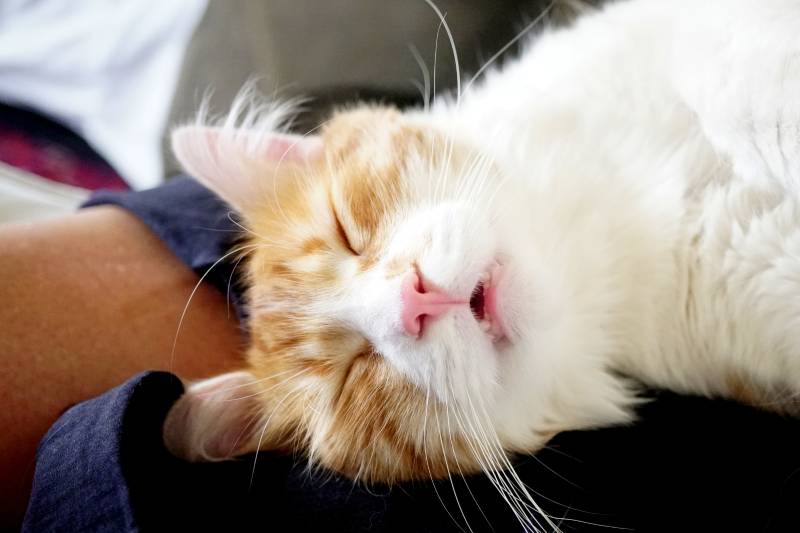If you have just returned home from a veterinary visit with oral medication for your cat, you may wonder, “How on earth am I going to get this pill into them?” Administering medication to our feline friends can be tricky, but preparation, patience, and a little creativity will help set you up for success.
Remember that all kitties are unique individuals, and you may have to try a few different methods to see what works best for your cat. Keep reading to learn how to give your cat a pill in five easy steps.

The 5 Tips on How to Give Your Cat a Pill
1. Double-Check the Directions on the Label

It is vital to give your cat’s medication exactly as directed by a veterinarian. Even experienced veterinary staff double-check labels before administering medication to patients! Taking a few extra seconds to read the label (especially if it is a new prescription) can help you avoid a mistake that might affect the success of your cat’s treatment plan or even be dangerous (in the case of an overdose, for example).
- How many times per day the medication needs to be administered, and how many hours to wait between doses
- Whether it should be given with food or on an empty stomach
- If you need to wear gloves when handling the pills for your safety (some medications can present health concerns if absorbed through your skin)
2. Confirm That No One Else in Your Home Has Given the Medication Already
If multiple people in your home will be giving your cat’s medication, it is a good idea to develop a system to ensure doses are not doubled up or missed.
- Using a pill organizer
- Creating a written or digital schedule and noting doses as they are given
- Checking in with other family members before giving medication
3. Collect All of The Treats and Tools You Will Need Before Getting Started
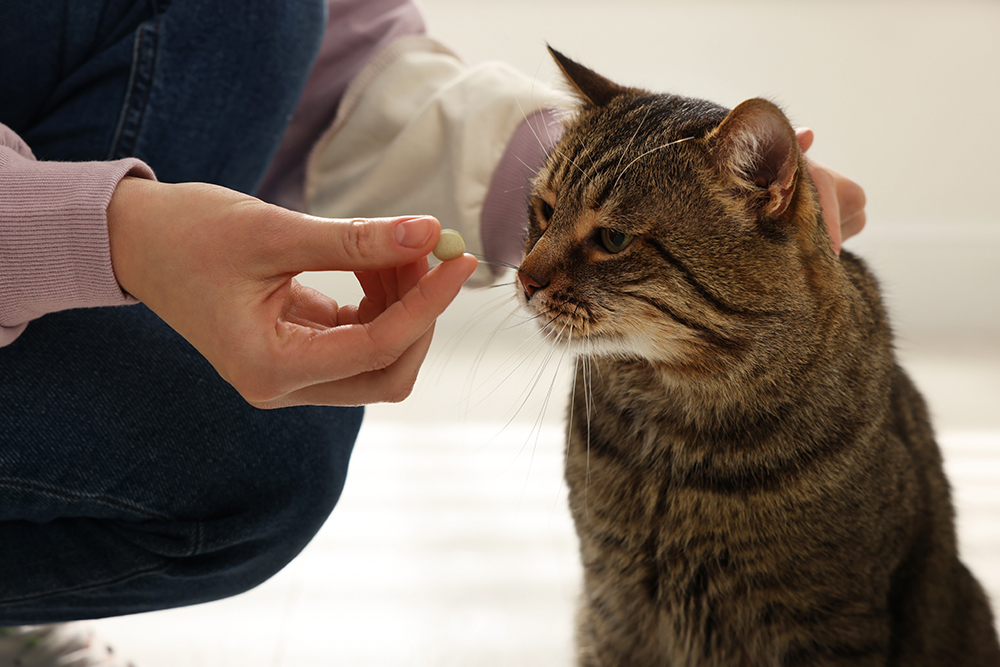
Have everything ready before finding your cat.
- The pills to be administered
- A pill splitter or sharp knife, if needed, to cut the pills
- Yummy food or treats
A second person can be helpful, too!
4. Disguise the Medication
Many kitties will readily accept medication if it is hidden in something delicious. Try wrapping the pill in a specially designed treat (e.g., Greenies’ Pill Pocket) or a soft food that can be molded around the pill. You can ask a vet to suggest some appropriate options for your cat.
If you need to speak with a vet but can't get to one, head over to PangoVet. It's an online service where you can talk to a vet online and get the advice you need for your pet — all at an affordable price!

It is vital to handle the pill with one hand and the treat with your other hand so the outside of the treat does not taste like medication. Mikkel Becker, a pet behavior expert, recommends using a 3-step approach:
- First: give a treat without a pill
- Second: give the treat containing the pill
- Third: give another freebie treat (or a few!)
Each time you give your cat’s medication, change the number of treats and their order so they do not figure out which treat contains the pill. Some kitties appreciate variety in their treats. Remember to keep the treats small so your cat does not have to chew them.
If the veterinarian gives the okay, you can also try crushing the pill and mixing it with wet cat food or canned salmon juice. However, a risk with this method is that your kitty may not get their full dose of medication.
5. If Necessary, Place the Pill in Your Cat’s Mouth
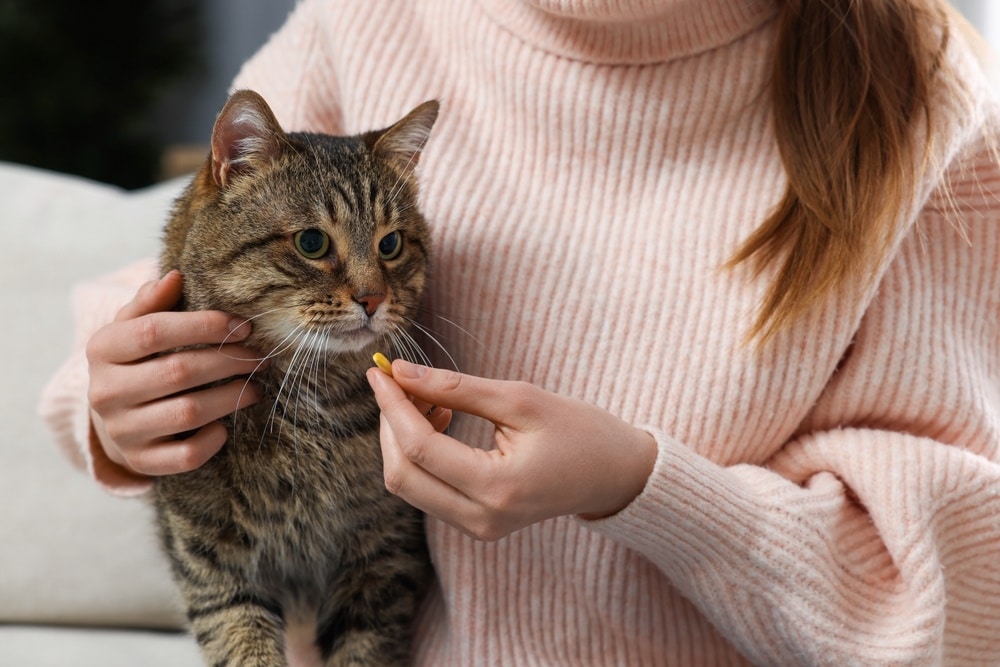
If you have a finicky feline who is too discerning to take their medication disguised in food or treats, you may have to place the pill directly in their mouth. It is important to go about this the right way to minimize stress and make sure you and your cat do not get hurt!
- Pick a time when you and your cat are both relaxed, and you will not feel rushed.
- Gently hold your cat’s head by making a sideways C-shape with your non-dominant hand; place your thumb on one side of their upper jaw and your index or middle finger on the other side.
- Tip your kitty’s head back slightly (not too far), and with the middle finger of your dominant hand on the center of their lower jaw, slowly open their mouth.
- Use the thumb and index finger of your dominant hand to place the pill inside their mouth, near the back of their tongue.
- Close their mouth, lower their head to a more natural position, and gently hold their mouth shut until they lick their nose (indicating they have swallowed the pill).
- It may be helpful to massage your cat’s face and neck to help encourage swallowing.
- Always follow up by offering some food or treats to help the pill pass into your cat’s stomach.
IMPORTANT: if your cat becomes agitated or tries to bite or scratch you, stop what you are doing and try again later!
If you are uncomfortable placing your fingers in your cat’s mouth, ask a veterinarian to show you how to safely use a tool like a pill gun.

Conclusion
Giving your cat a pill does not have to be a scary or stressful experience! If you have worked through our recommended steps and are still having trouble, ask a veterinarian for help. There may be a longer-acting or injectable medication available. As surprising as it sounds, some cats are more tolerant of injections than oral medication.
Some medications can be compounded into forms that are easier to administer. Examples include flavored liquids, chews, and transdermal gels applied to the skin.
One of the best things you can do is practice giving your cat a pill before they need medication! It is ideal to begin when your cat is a kitten and make it a regular part of their training, but it is never too late to start. Check out this handout with great tips for a fear-free experience.
See Also:
- What Is Apoquel for Cats Used For? Our Vet Explains
- How to Cut Pills Easily & Accurately for Your Cat: Vet-Verified Tips
Featured Image Credit: Andrew Rafalsky, Shutterstock

